Title : Recent advancement in conservation of animal genetic resources
Abstract:
Livestock biodiversity is essential for food and livelihood security, but animal genetic resources are still underutilized and underconserved. A lot of genetic diversity exists in livestock breeds/population with respect to uniqueness in production potential, adaptability and diseases resistance. Uniqueness is the result of evolutionary forces and their interaction over longer period of time and its accurate analysis can provide genetic information that can be used in conservation and improvement. So, the ultimate goal of conservation is to maintain a sufficient balance of genetic diversity in population and prevent genetic erosion. For conservation we need to have complete information regarding breeds, members, distribution and population structure, trends in number, productive performance and adaptive characters. Local genetic resources are threatened by a number of factors including indiscriminate crossbreeding with cosmopolitan breeds and uncontrolled intermixing results into reduction of population size followed by increase risk of inbreeding. FAO reported 7600 breeds of livestock and more than1500 breeds are at risk of extinction or are extinct.
Conservation of all breeds is considered to be financially infeasible due to cost of conservation, no particularly unique or valuable characteristics worth, having little historical or cultural significance and some breeds having very much similarity to each other genetically. Therefore, prioritization is needed. Therefore, it also needs to assess the accurate extinction probability, conservation value and conservation priority choosing the appropriate methodology and conserve them with suitable method of conservation in-situ under natural habitat or ex-situ under gene bank. Both genetic diversity and non-genetic criteria are important for prioritizing breeds for conservation. The threat status includes risk of extinction and efficiency of the breed utilization, and breed merit includes economic or productive, ecological and socio-cultural values of the breeds.
Traditional, genetic diversity analysis is based on pedigree records that is helpful to estimate inbreeding coefficient, coancestry etc. Molecular tools are at present one of the most powerful tools for genome analysis. These tools are not only used to genetic diversity analysis but also to reveal population characteristics like number of individuals, population dynamics, taxonomy, kinship etc. In 1990, microsatellite molecular markers prove to become very successful and extremely used for parentage testing, individual identification and breed allocation. But in past decade, modern genetic analysis arose with high- throughput sequencing, obtaining genetic information such as single nucleotide polymorphisms (SNPs) and shortgun whole genome sequencing (WGS). Thus, in addition to genetic diversity analysis, we need to consider threat status, breed utility and breed merit that enable us to make a balance between conserving diversity as insurance against future uncertainties and current sustainable utilization.
Audience Take Away:
- It would be helpful for enrichment of knowledge, to set up the research objective and execution of research problems and finally policy making for conservation



